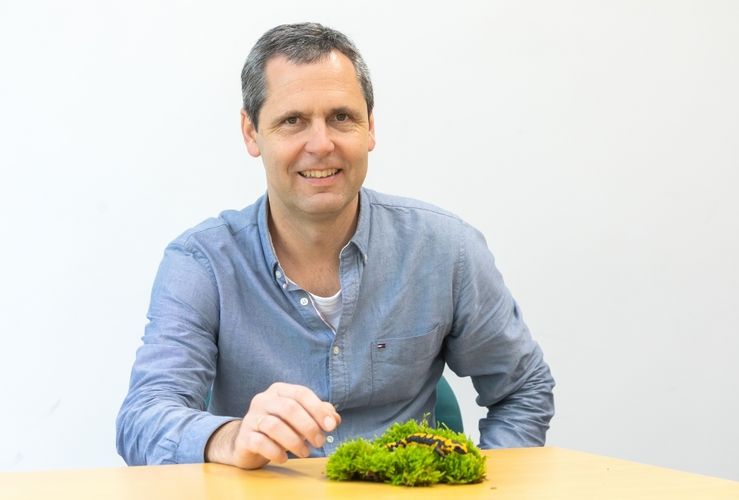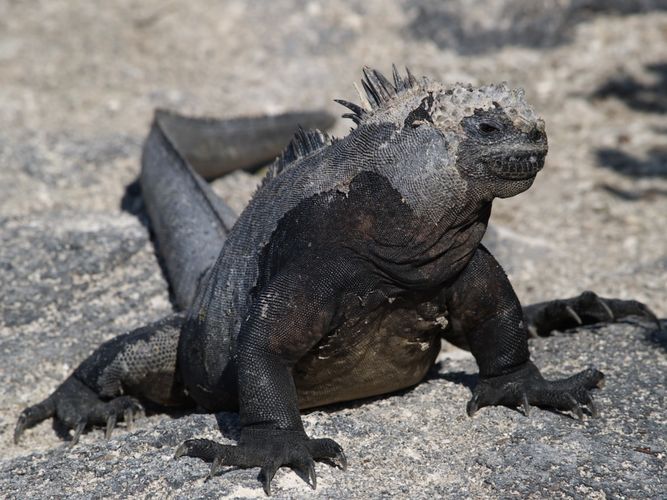Two projects will soon spend several weeks on location in the Galapagos Islands to study the archipelago’s marine iguanas. Over millions of years of evolution, these animals are the only lizards on the planet to have adapted to a marine habitat, enabling them to forage in the sea for their food – marine macroalgae. They are endemic to the Galapagos Islands, an archipelago in the Pacific Ocean more than 1000 kilometres west of South America. The islands belong to Ecuador and are perceived as natural laboratories of evolution.
In cooperation with the TU Braunschweig, the first project will see the biologists from Leipzig investigate the diet of Galapagos iguanas. “Important natural food sources and the food spectrum are crucial for species,” said Professor Sebastian Steinfartz. He was appointed Professor of Molecular Evolution and Systematics of Animals at Leipzig University in April 2019. “Climate change can alter the composition of diets. Populations then decrease, and we don’t know exactly why. This is why we want to study the feeding ecology of marine iguanas in detail for the first time. Initially, of course, we will only be able to draw conclusions for short periods.” To gain an insight into what the lizards eat, the biologists will collect and examine what they leave behind: faeces. After returning to Germany, the researchers will use different methods to analyse faecal samples: by means of what is known as DNA metabarcoding of the food components still detectable in the samples, they will be able to determine which different types of algae the lizards have consumed. Stable isotope analysis will also reveal where exactly the lizards’ food came from geographically and where they ate it. The doctoral researcher Denisse Dalgo, originally from Ecuador herself, is currently pursuing a doctorate on the lizards’ feeding ecology at Leipzig University and is already in the Galapagos. Dr Sten Anslan from the TU Braunschweig will accompany the expedition.
Once there, the expedition team will work closely with biologists from Ecuador’s Universidad San Francisco de Quito, sharing their infrastructure and logistics.
The scientists expect the first results of their investigations in the summer.
In the second project, the researchers will count the animals they find on the islands. For the first time, they will use camera drones to locate the iguanas on land from the air. This group is led by Dr Amy MacLeod – a former doctoral researcher under Sebastian Steinfartz who is associated with the research group in Leipzig. She devised the project.
To begin with, the lizard monitoring will be trialled on one island: the relatively small Santa Fé. “We see this as a pilot project. We want to demonstrate that it is actually possible – in terms of both technology and feasibility,” explained evolutionary biologist Steinfartz. More islands in the archipelago will follow in the future. In the long term, the biologists hope to establish a marine iguana census. For this they require an overall idea of how many of the animals exist – there are eleven subspecies distributed on different islands. This is the only way to ascertain how widespread the individual subspecies are, five of which were first described in 2017 by Sebastian Steinfartz and his then team at the TU Braunschweig. A precise understanding of the population sizes is the basis for a realistic assessment of how threatened the species is overall. For only if the entire genetic diversity of the marine iguana, including its individual subspecies, is preserved will the species be able to survive in the long term. Such classifications are made by the International Union for Conservation of Nature (IUCN). This body publishes the Red List of Threatened Species. It will draw on the research findings of the lizard researchers from Leipzig and Braunschweig.
































































